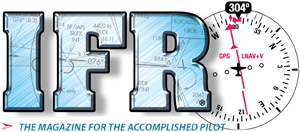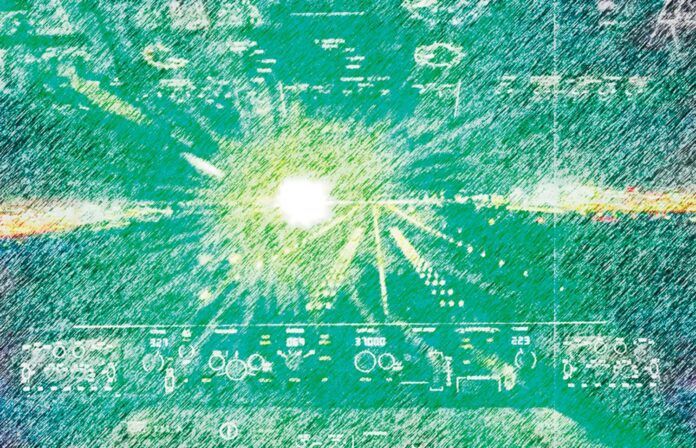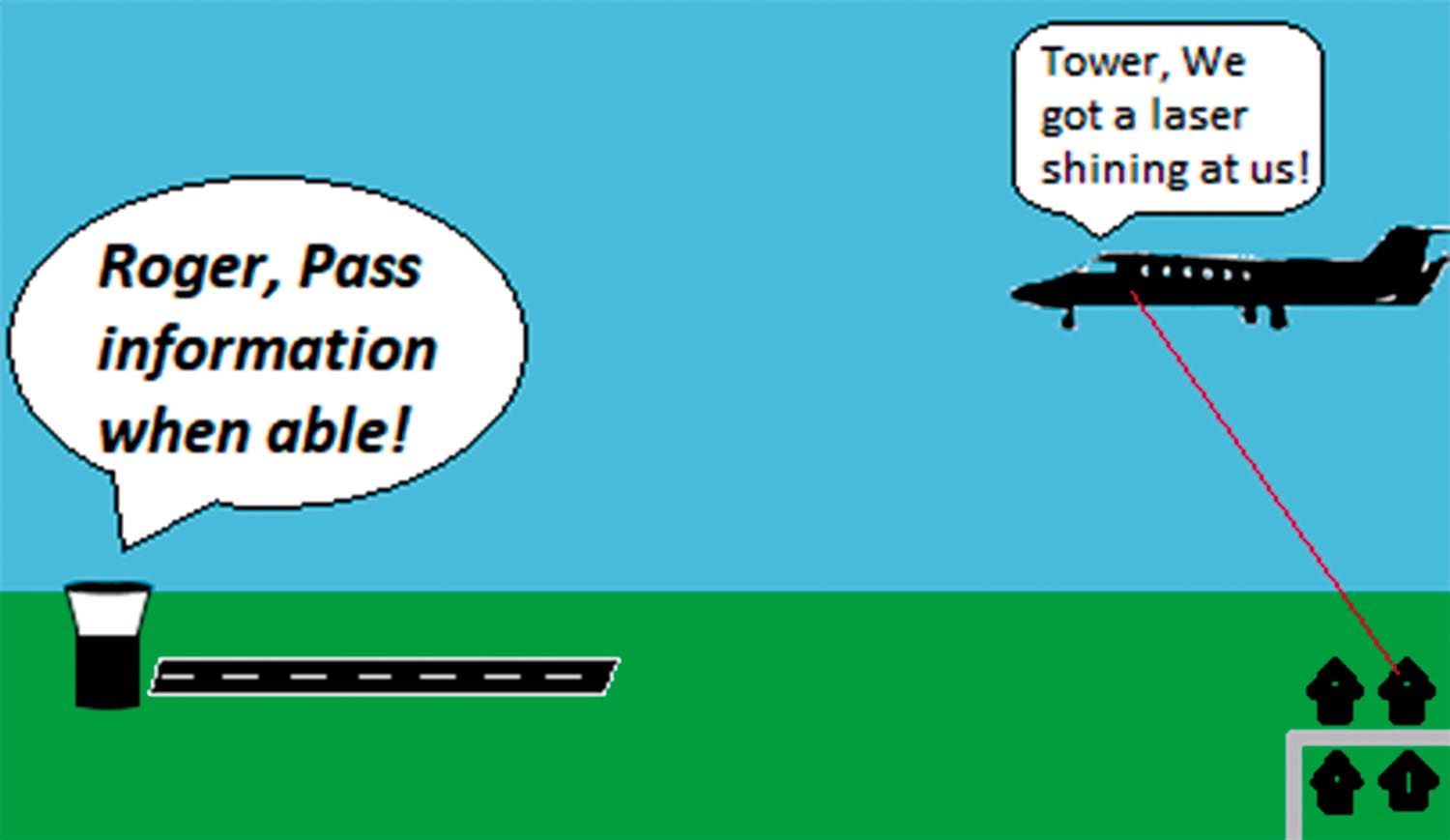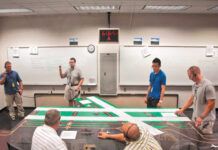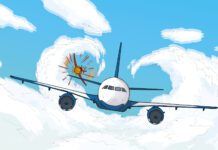Many of us have played with lasers at some point. We should know that even the small ones can damage our eyes. While smaller lasers are generally safe for short periods, the bigger ones are potentially harmful, even from miles away. What pilots do and how they are trained are one story, but we’ll stick mainly to what ATC does whenever we hear the words “laser” or “My eye!” We’ll also discuss some aftermath of such events.
Surprisingly Common
In 2021 and 2022, there were over 18,000 laser events reported in the U.S. It’s a bigger deal to pilots than to ATC. ATC has received training on how to “run the checklist” in those events, but there’s not much more we can do except ask if the pilot needs assistance. When I hear “laser,” I will always ask. It’s also part of our checklist to ask if there were any injuries and note them. The “injuries” part is what will bring the authorities fast if injuries are reported. A laser shined at an airplane can be considered an attack.
Pilots probably don’t have an “in the moment” checklist to run in a laser event—simply don’t look. Just continue to aviate, navigate, and communicate to the best of your ability. Without endangering any operation, report it to ATC immediately. ATC needs to know so they can alert other airplanes in the area, while hopefully gaining important information on the exact location of the laser.
One of the first calls a tower will make is to the local police. More on the police in a minute, but keep in mind this information is extremely important. When you report to ATC, they will want to know the color, direction from aircraft heading (two o’clock, nine o’clock, etc.), any injuries, and your current altitude. I know that last one sounds weird, but it’s a fail-safe in case a pilot is climbing or descending. Behind the scenes, this info is taken and passed out to a lot of people in efforts to locate the offender.
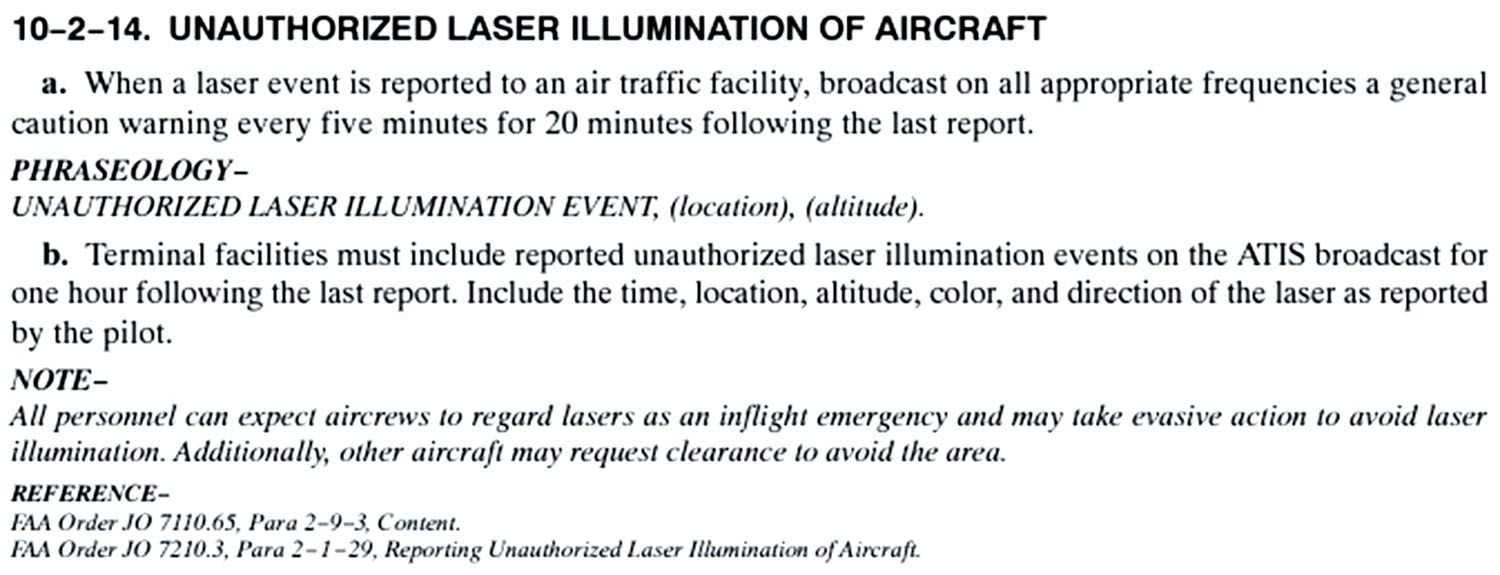
ATC Checklist
Believe it or not, laser events don’t apply only to pilots. Our procedures exist because aircraft are the most common targets, with pilots as victims. But on occasion a tower will be lit up as well. Our checklist is the same. Assuming there are no injuries and a pilot is not even temporarily blinded by an event, air traffic is not drastically affected. On the other side of things, laser events could turn into emergencies in a split second. ATC has a nice long checklist full of people to call, and it all starts with opening the log entry.
Every facility has a checklist to run for a laser event. However, I will say that the number of things and order of the checklist items vary from ARTCC to Tower. Compared to a tower, a center might have a different route (pun intended) to take in terms of “who to call” first. For this article, I’ll stick to a basic “tower” laser-illumination checklist.
As mentioned previously, it starts with a specific log entry made on the computer. We have to enter in all the information we received about the event. This must include follow up information when provided (UTC time, callsigns, closest major city, color, direction from aircraft heading, altitude, lat/long if needed, etc.). After we type up a preliminary paragraph, we start the actual checklist.
First thing on that checklist is usually to call the local DPS (Department of Public Safety), who in turn calls the police. All of the info I typed into the log is shared with them per the checklist. After that call has been made, we contact the JSEN (Joint Safety Event Network) and relay the same info. The JSEN will then forward us to the DEN (Domestic Events Network).
The DEN might or might not want the whole story—they have access to our logs. If they do, I give it. After all of that, some facilities require us to contact the ATM (Air Traffic Manager) solely to advise him/her of the event. We then finish up the report and hit the submit button. That’s the bulk of the admin side of the checklist.
On the working side of the checklist, after any laser event occurs, we are to broadcast on all appropriate frequencies a general caution warning every five minutes for 20 minutes following the last report received. We also get to throw it on the ATIS for an hour and include all of the pertinent info. You might hear, “Attention all aircraft: unauthorized laser illumination event at 1300Z, four miles south of the field at 2000 feet, green laser from the east.”
Obviously an approach control or ARTCC won’t have an ATIS, however the broadcast on frequency is definitely used. Even though the book says every five minutes, I will personally treat that as a minimum. I could have a jet come in and land or takeoff in that time, so I will generally tell every new aircraft on frequency about the reported laser. If their path takes them over the area, I will offer a route around it if needed (i.e., instead of a left downwind, maybe fly a tad farther and do a right downwind if it keeps pilots farther from that area).
Consequences…
Shining a laser at an airplane isn’t just unsafe, it’s a stupid thing to do. Similar to drunk driving, shining a laser at an airplane can have serious consequences. Most people who do this do not think about the big picture. For starters, intentional or not, those who shine a laser at an aircraft are endangering the public safety. As a controller, I am responsible for reporting anything I see or am told by pilots that affects safety of flight or even public safety.
The seriousness of this is underrated. Potential effects of shining a laser at an airplane start with blindness (any degree), which can lead to loss of control. In two-pilot aircraft, chances of both pilots blinded at the same time are slim. What about a single-pilot Cessna? When pilots practice flight with foggles, they are still able to see which way is up with reference to instruments. Imagine being under the foggles, but still having to close your eyes. Unless you’re flying a specific aircraft with “auto-leveling,” you could easily fly yourself into the ground.
In most of the United States, penalties for shining a laser at an aircraft range from misdemeanors to felonies. For example: In California, shining a laser at an aircraft is charged as a misdemeanor. However, if there are any injuries or damage caused, that may be cranked up to a felony punishable by 16 to 36 months in prison with fines up to $2000. In Texas, it starts with a class C misdemeanor, but can go up to class A if it “impairs the operator’s ability to control the aircraft.” In New York, it starts as a class A misdemeanor and can go up.
To top it all off, the FAA Modernization and Reform Act of 2012 specifically states that it’s a “federal felony” to knowingly point the beam of a laser at an aircraft. So not only would someone be prosecuted at the state level, they could also be prosecuted at the federal level. One of the only reasons you could do this and have zero prosecution is if you are intending to send an emergency distress signal, but that’s a story for another time. Last, if you think, “what if they never catch me?” They will. It’s just a matter of time.
If you are reading this and have been struck by a laser, please report it. Notify ATC when able, file a NASA report when you land, and you can even go to the FAA website to report incidents as well. Do not let these things slide. Even if it doesn’t affect you, it could affect the pilot behind you. Your report could be the difference between multiple airplanes getting flashed and only one.
Please, Just … Don’t
If you’re reading this, do your absolute best to educate others on the importance of not shining lasers at aircraft (or that distant control tower visible on the horizon). It’s a federal crime and you can face penalties or jail time. Whenever ATC hears these things, all we can do is tell pilots. It’s up to them to take appropriate action and to keep the flight safe.
Police Helicopters Do Work
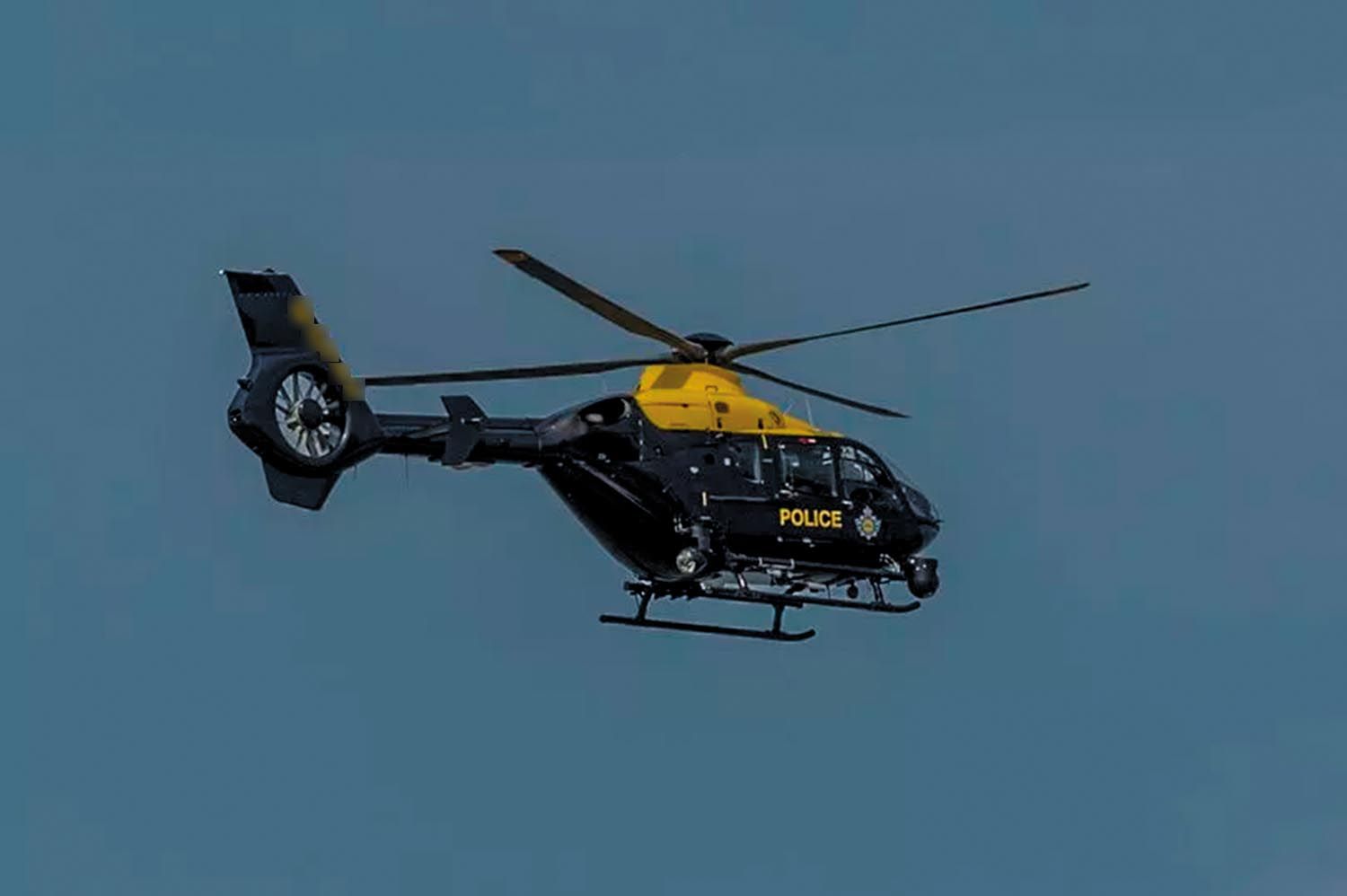 A few years ago, I was working a night shift with very little going on. I maybe had one arrival or departure every 30 minutes. The police helicopter (we’ll call it Air 1 as many cities do) went out for patrol a few minutes before an “incident” happened. I had a Lear here, Citation there, and then came a Falcon. “Tower, Falcon 12345, visual.” I repeated what I’d been saying for a while. “Falcon 12345, Tower. Runway 36, cleared to land.” He started to respond but then stopped mid-sentence.
A few years ago, I was working a night shift with very little going on. I maybe had one arrival or departure every 30 minutes. The police helicopter (we’ll call it Air 1 as many cities do) went out for patrol a few minutes before an “incident” happened. I had a Lear here, Citation there, and then came a Falcon. “Tower, Falcon 12345, visual.” I repeated what I’d been saying for a while. “Falcon 12345, Tower. Runway 36, cleared to land.” He started to respond but then stopped mid-sentence.
With nothing else going on, I give him a few moments, then said, “Falcon 12345, Runway 36 cleared to land. Everything okay?” A different voice from first responded, “Falcon 12345 just got hit with a laser off our right side, uhh, it was green, co-pilot having a hard time seeing.” Of course, I asked if he needed assistance, but with him being on about a three-mile final (critical phase of flight), he simply said, “No, uhh, landing.”
All of this occurred and by the time I was done talking to the Falcon, Air 1 came on frequency and said, “Tower, Air 1. We saw where the laser came from. We’re headed to that location.” I said, “Roger, obviously use caution!” The Falcon landed without further incident, taxied off the runway and stopped. “Falcon 12345, when able say parking, feel free to take all the time you need.” No response. “Tower, Air 1. We’ve located the house the laser came from. They are still shining it.” I said, “Air 1, roger. Let me know if you need anything or if you want me to call the local PD.” They said, “Already called them and got a unit approaching the house now.” Deep down I had a smile, but wanted to make sure the Falcon pilots were okay. I went back to them and asked again where they were parking. “We need to go to the FBO. My first officer is still having a hard time seeing.” I responded, “…Roger. Taxi to parking via Alpha. Any more details you can give me are helpful.”
The pilot said, “I got nothing. That was really not cool, I hope they catch that SOB.” I told him, “…the police helicopter was already out. They have located the house it came from and have a unit there already.” “Good! I hope they catch him so I can file charges.” I said, “Me too … not cool.”
A few moments later, “Tower, Air 1. We’re all done here. Inbound to the ramp.” I replied, “Air 1, roger. Landing at ramp at pilots’ own risk.” “Own risk. We got it, Air 1.” Of course, I had to ask, “Did you catch them?” “Oh yeah they got him, were putting him in the back of the squad as we left.” I said, “Good! The pilots of the Falcon want to press charges. One of them is having a hard time seeing.” Air 1 asked for the callsign and said they would take care of it. Of course, while they had all their things to do, I started my checklist and finished in about five minutes.
I found out about a week later that it was a 17-year-old kid who had been caught doing the same thing before. He was charged with a Class A misdemeanor. That’s the last I heard of him … hope he learned his lesson. —EH
Like most controllers, Elim Hawkins hates doing paperwork for lasers or any other events.
